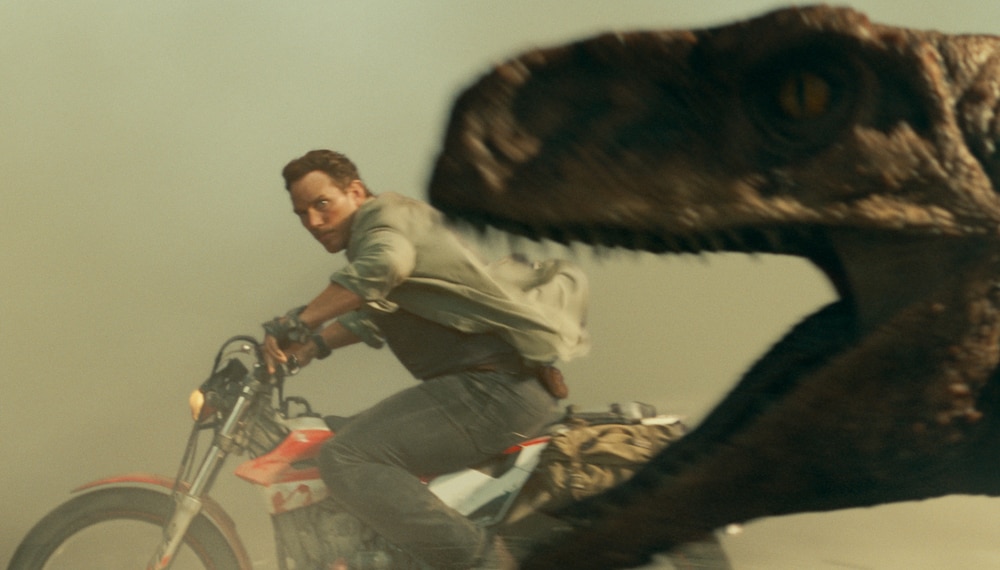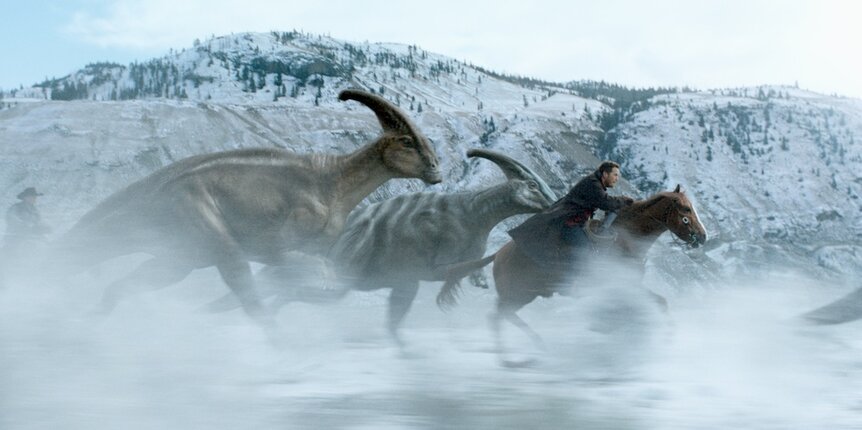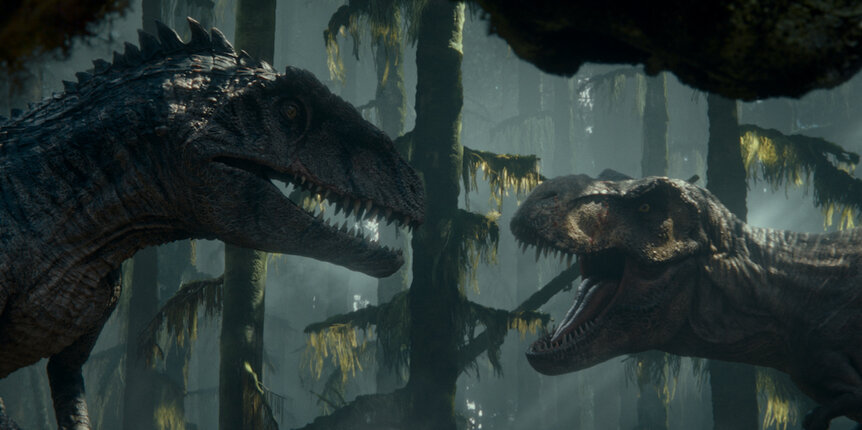Create a free profile to get unlimited access to exclusive videos, sweepstakes, and more!
Dinosaurs in the modern world: The science behind 'Jurassic World Dominion'
The modern world would pretty quickly cause a second dinosaur extinction.

It's been 25 years since The Lost World: Jurassic Park hit theaters and the franchise is still going strong. We're only weeks away from the release of Jurassic World Dominion, which leaves the park behind as genetically resurrected dinosaurs have been unleashed upon the world to live alongside humans.
Bringing dinosaurs back from extinction would be a massive scientific challenge, requiring either clean genetic material from animals who died out more than 65 million years ago, the ability to reverse engineer extinct animals from living descendants, or some combination of the two. Despite our ever-growing genetic abilities, resurrecting even recently vanished species is a huge undertaking.
Luckily — or unluckily, depending on your perspective — for the residents of the movie universe, InGen cracked that code to build the coolest and most dangerous theme park of all time. Still, bringing dinosaurs to life is only the beginning. Once they hatch from their eggs, you have to keep them alive, and that might be just as challenging.
Once out of their carefully controlled theme park environments, things get even worse. If they escaped their enclosures to roam the wider world, could life find a way to let them survive on a modern Earth?
BREATHLESS AND COLD
The world as it exists today is wildly different than it was in the Cretaceous, when many of our favorite dinosaurs lived. Perhaps the most immediate challenge facing any dinosaur living in the modern world would be getting enough oxygen.
The beginning of the age of dinosaurs, about 215 million years ago, corresponded with an increase in atmospheric oxygen from 15 percent to 19 percent. The current atmosphere has about 21 percent oxygen so some of those early dinosaurs from the Triassic would likely be plenty comfortable running around today. Their friends from the Cretaceous wouldn't be so lucky.
Over the course of the next 150 million years things continued to change such that the oxygen requirements of late-Cretaceous dinosaurs might have been much higher. The stars of the Jurassic Park franchise — namely the T. rex and velociraptor — lived between 90 and 66 million years ago when the atmosphere on Earth was positively stacked with oxygen.
Using air bubbles trapped in amber, scientists were able to analyze samples of the atmosphere during the Cretaceous and found oxygen levels as high as 35 percent. For a dinosaur like T. rex that had adapted to live in a world with that much oxygen, running around and chasing Bryce Dallas Howard in the modern atmosphere would be like hunting prey while climbing Kilimanjaro. Each breath would offer barely more than half of the oxygen they're used to. Moreover, that's a best-case scenario at sea level. If you live in Colorado, at a higher elevation where there's less oxygen, it's possible your dinosaur pursuers would pass out before they ever reach you.
They'd also be fighting the cold, at least from their perspective. Global temperatures during the Cretaceous were between 5 and 10 degrees warmer than they are today and the difference in temperature by latitude was less extreme.
All told, any dinosaurs let loose on the modern world would find themselves inhabiting a planet which looks not at all like the one the left behind, making every moment unpleasant at the very least. Maybe that's why they're so angry.
HUNGRY, HUNGRY DINO
Dinosaurs are charismatic, so it makes sense that they're largely what we think of when we think about the deep past. Just like modern animals, though, they lived inside of a complete ecosystem which balanced a complex web of life.
For carnivores, meat is meat, for the most part. Your T. rex and raptors could probably survive just fine on modern animals — humans included — though they may not enjoy it. Just like modern animals, it's likely that prehistoric predators had a preference for certain prey items, all of which wouldn't exist in a modern world. If you've ever travelled to another country and found your palette at odds with the local cuisine, you have an idea of what it might be like. Now extend that to an entirely different planet. For all intents and purposes, the modern Earth might as well be an alien world as far as extinct dinosaurs are concerned.
Of course, we're bringing back the herbivorous dinosaurs as well, couldn't the carnivores eat them like they might have done millions of years ago? Well, yes and no. Those herbivores depended on specific plants to survive, many of which no longer exist. In the controlled environment of a theme park, you might be able to bring back some of the plants they need to survive, or else supplement their diet to keep them healthy. Once outside of the pen, it's another story.
It's entirely possible that modern plants wouldn't give many herbivores the nutrition they need. Even if they did, there are other dangers in a modern world. Pesticides and herbicides, which are regularly sprayed on plants, could result in fatal toxicity. Moreover, the density of plants in urban centers pales in comparison to the tropical environments dinosaurs are used to.
Before long, you'd have a whole bunch of dead herbivores, and the food chain would collapse. Sure, some predators could survive on the remains, and modern prey for a while, but it wouldn't be stable. There's an entire ecological support system dinosaurs would be lacking. They'd be in for a bad time, and a brief one.
Scientists have been having similar conversations about resurrecting the wooly mammoth, an animal which died out only thousands of years ago, and it's unclear if they could scrape out a meaningful existence in a world which doesn't resemble the one they knew. Those problems would only be compounded by the vast evolutionary and geological timescales separating us from the dinosaurs.
That said, dinosaurs could probably survive long enough to make for an exciting movie. We'll find out when Jurassic World Dominion hits theaters June 9, 2022.




























